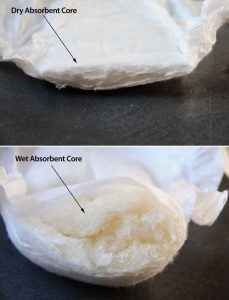In the industrial and environmental sectors, managing waste liquid efficiently and safely is crucial. Waste liquid absorbents play a vital role in this process, ensuring that harmful substances are contained and treated appropriately. This guide will delve into various aspects of waste liquid absorbents, from their materials to their applications.

Understanding Waste Liquid Absorbents
Waste liquid absorbents are materials designed to absorb and retain liquid waste, making disposal easier and more environmentally friendly. These absorbents can handle a variety of liquids, including hazardous chemicals and non-hazardous substances.
Types of Liquid Absorbents
There are several types of liquid absorbents, each suited for different applications. Some common types include:
- Chemical absorbents: Used for handling hazardous chemical spills.
- Environmental absorbents: Designed for eco-friendly waste management.
- Industrial absorbents: Used in industrial settings for managing large volumes of waste liquid.
Absorbent Materials
Absorbent materials vary widely, with each type tailored to specific needs. Common materials include:
- Natural fibers
- Synthetic polymers
- Mineral-based products
These materials are chosen for their high absorption capacity and efficiency.
Absorbent Products and Their Applications
A range of absorbent products is available on the market, from mats and pads to booms and pillows. These products are used in diverse settings, including:
- Industrial waste liquid treatment
- Environmental spill response
- Everyday waste management tasks
The Role of Absorbent Technology
Advances in absorbent technology have led to the development of more efficient and effective products. Innovations focus on increasing absorbent capacity and absorbent efficiency, ensuring that spills are managed swiftly and effectively.
Absorbent Manufacturing and Selection
Absorbent manufacturing involves a careful selection of materials and processes to create products that meet specific needs. When selecting absorbents, consider factors such as:
- Absorbent performance: How quickly and effectively the absorbent can contain the liquid.
- Absorbent safety: Ensuring the absorbent material does not react adversely with the liquid.
- Absorbent composition: The materials used and their environmental impact.
The Absorbent Market
The absorbent market is growing, with increased demand for efficient waste liquid management solutions. This growth is driven by stricter environmental standards for absorbents and a heightened awareness of environmental protection.
Pricing and Suppliers
Absorbent pricing can vary based on the type, material, and capacity of the product. It’s important to research absorbent suppliers to find the best products that meet both performance needs and budget constraints.
Absorbent Research
Ongoing absorbent research aims to improve the materials and technologies used in absorbents. This research focuses on developing more sustainable, efficient, and cost-effective solutions for waste liquid management.
Conclusion
Effective waste liquid treatment is essential for maintaining a safe and clean environment. By understanding the different types of absorbents, their applications, and the latest technologies, industries can make informed choices about the products they use. Investing in high-quality absorbents not only ensures compliance with environmental standards but also enhances overall operational efficiency.
Whether you’re dealing with industrial spills or everyday waste, selecting the right absorbent is key to successful waste management.

